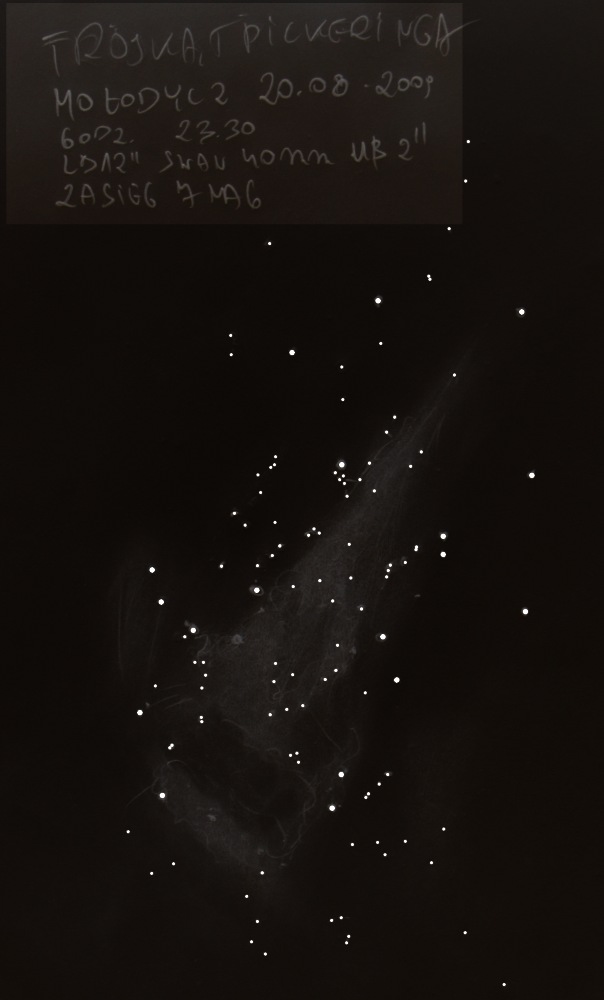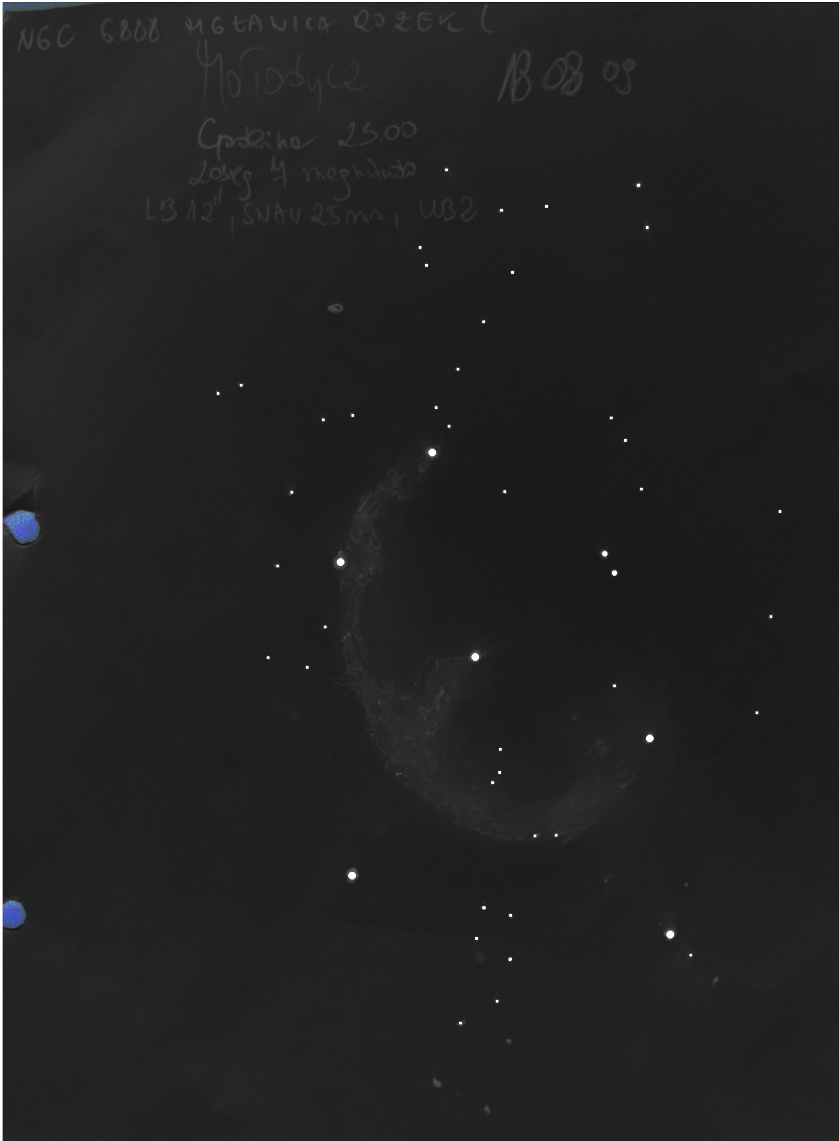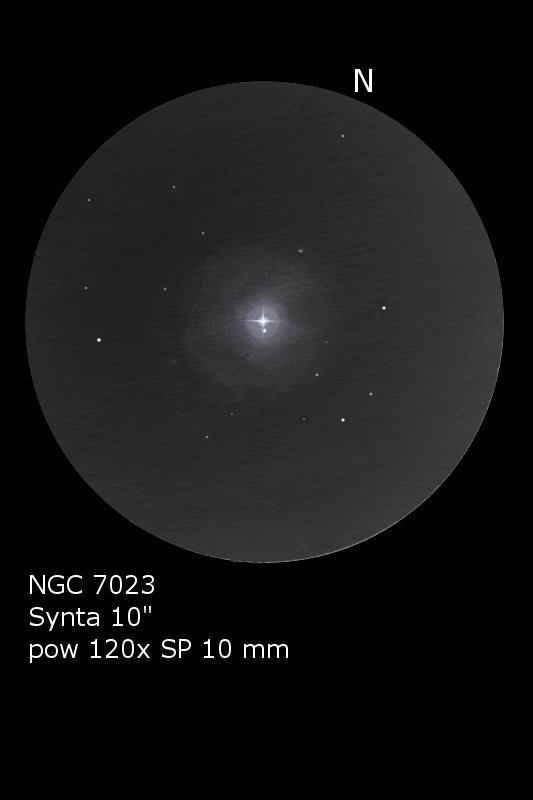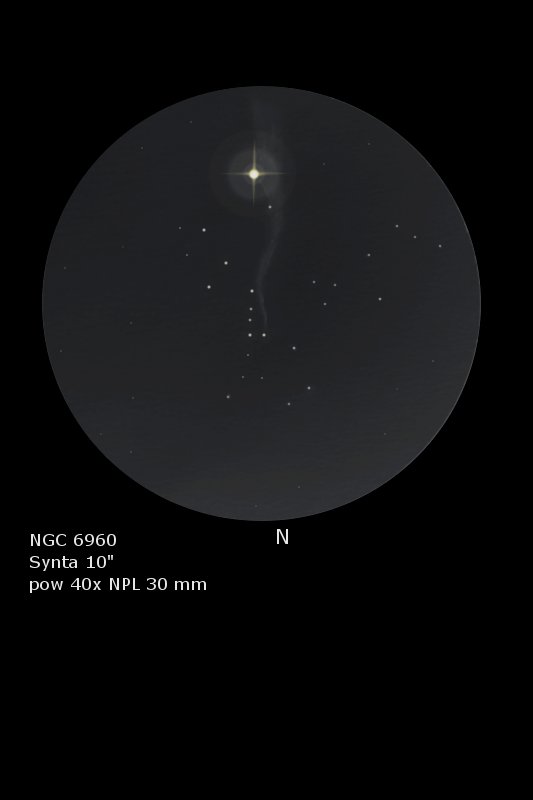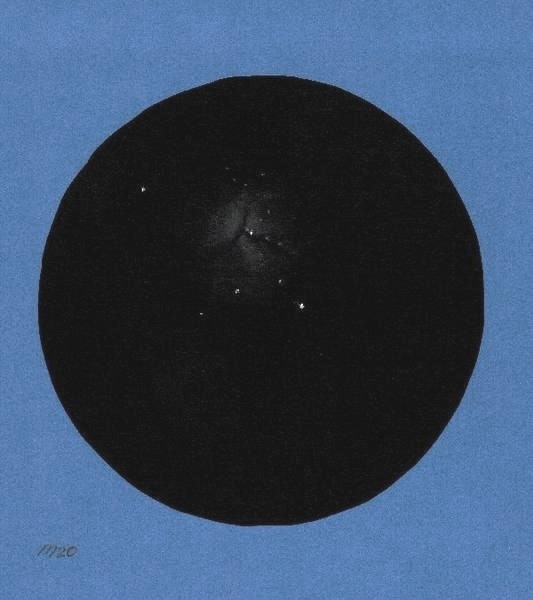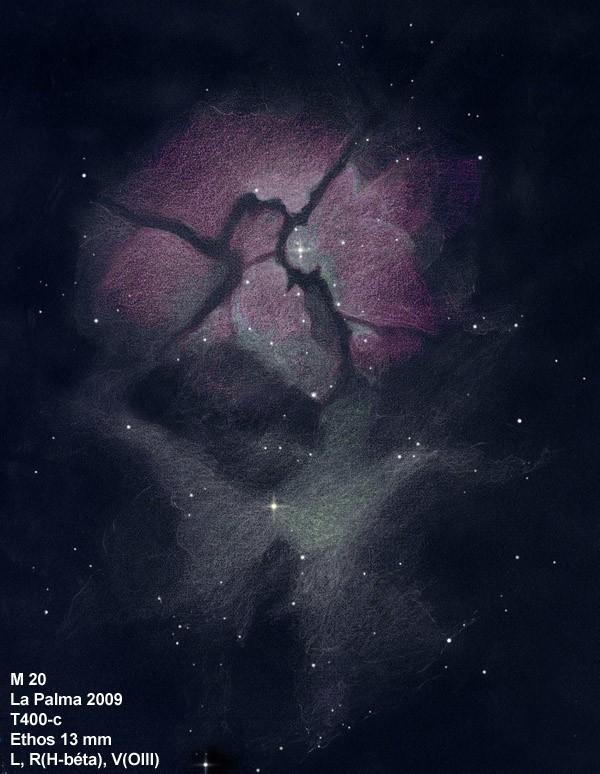
Emission/Reflection nebulae M-20
Sketch and Details by Serge Viellard, translation by Frank McCabe
Superb stay organized by the astronomy club in La Palma from the 9th to the 18th of October, 2009. We spent 3 nights at the top of the volcano (2400 m), next to the professional domes in a universe under a very good sky, well above the seas of clouds. This stay will remain marked by the will to carry out the portrait of the nebulas known as the Trifid and the Eagle. Both were marvelous to observe so well in the 16 inch scope, the vision abounds in details, differently highlighted according to filters used which allows these colorized drawings L, R (H-beta), V (OIII). I was encouraged to remake the drawings of the first night on pre-drawn star fields made during the next two nights, that in order to gain more precision. I appreciate in the Trifid the incredible complexity of the various dark channels, noting their particular forms, the meanders and their notches. I would have spend more time on the lower parts of nebula but the object was visible only a little of time at the beginning of night. Then comes the time to observe the Eagle with its notable and significant “pillars of creation” and incredible detail. Their perception varies according to the magnification employed and filters used. They are well highlighted with the UHC-S filter and a magnification of 220x.
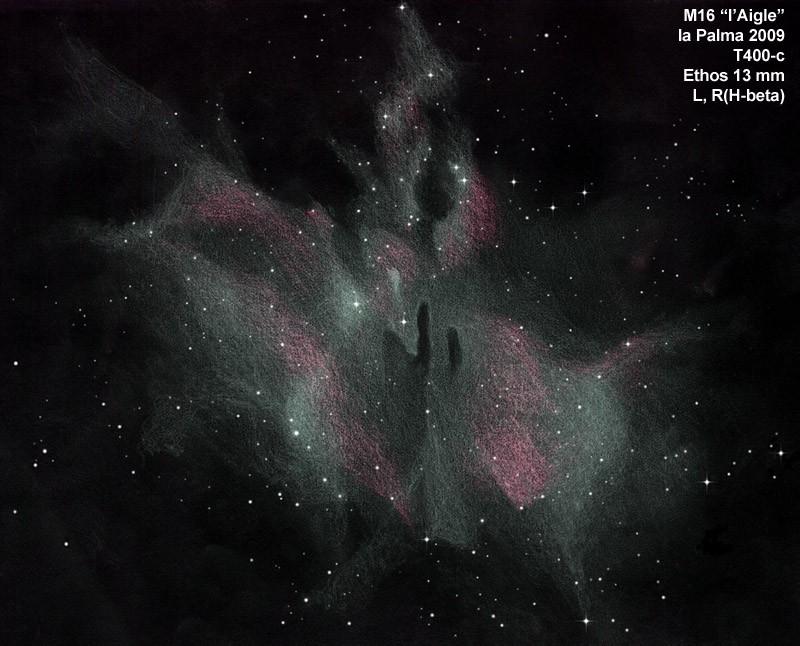
Emission/Reflection nebulae M-16
Sketch and Details by Serge Viellard, translation by Frank McCabe


